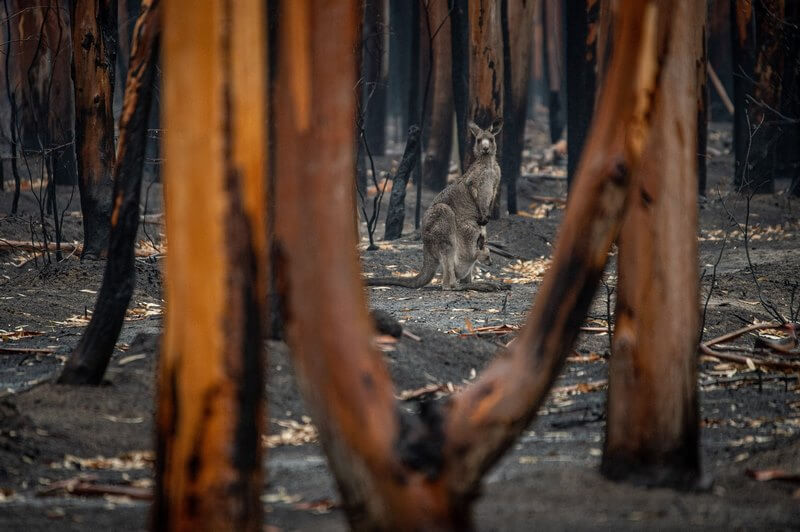
May you live in interesting times
Living through a climate of change and why resilience matters is the subject of my latest blog. May you live in interesting times is an English expression often misrepresented as a Chinese curse. Attributed to Sir Austen Chamberlain, his quote was: “It is not so long ago that a member of the Diplomatic Body in London, who had spent some years of his service in China, told me that there was a Chinese curse which took the form of saying, ‘May you live in interesting times.’ There is no doubt that the curse has fallen on us. We move from one crisis to another. We suffer one disturbance and shock after another.”
I share this because we all experienced difficulties over the past few years. However, I might argue that the last 100 years have been an onslaught of one crisis after another. Yet, it seems like, since 2020, COVID has impacted the world but also concurrent events from natural disasters, warfare, and now rising food insecurity. When even the wealthiest nation in the world is raising the alarm like Feeding America and the USDA Launches Feds Feed Families 2022 to Help Fight Food and Nutrition Insecurity, we have to pay attention. Already, I am thinking about how companies can augment and assist lower-wage workers with food supplementation.

Mitigating disasters and employee impacts
As resilience professionals, not only do we analyze macro events like natural disasters and famine, but we then determine how that can affect our business. For example, could food insecurity due to heatwaves lead to a drought that impacts the employees at your company? Will it make them less effective and prone to costly errors due to a lack of focus brought on by hunger? These are the micro, downstream effects I track as a resilience practitioner.
In the past, I might only have considered the impact of a crisis. Say, when a manufacturing plant fire or infrastructure explosion happens in the future, will we do more than trace it to human error? Will we, instead, consider the health and well-being of employees to limit the potential damage of events from ever happening? And, if resiliency measures are not in place, will we then enact them to make it part of after-action planning when identified? Indeed, this puts a different spin on preparedness. The question is, will board members, shareholders, and customers demand it? My recommendation is to start acting as if they will.

A resilience pivot
Now is the time to shift your program to a resilience focus. If continuity and crisis management is your gig, pivoting to a resilience approach will contribute to business resilience. With inflation rates soaring and a recession looming, practitioners can no longer afford to be reactive. Instead, to increase value, we should actively contribute to organizational plasticity. Understandably, businesses will focus on profitability for the remainder of 2022 and into the new year.
Already, we’ve seen companies leverage layoffs and hiring freezes to reduce the impact on their bottom line. I am sure CEOs, their boards, and senior leadership are agonizing over this decision-making process. They made a valiant effort in all sectors to keep people working through the pandemic. But, the pressures of a continued COVID response, war in Ukraine, and market instability pushed many companies to the brink. To survive and thrive, companies are taking harsh actions. Yet, this is where our value comes into play. Many recognize that Data is Playing a Bigger Role in Business Continuity Planning.

Climate change and risk concerns
Look, I’m not a scientist. Government sources, academia, and media outlets tell us that climate change is a reality. Other sources refute that. I’m not going to debate any of that here. However, it is my job to note the increase and severity of natural disasters in our environment. To learn more on the topic, read my blogs, Natural Disasters – Five Year Review and Top 5 disasters. They catalog the leading severe weather events and those that may have downstream effects, including disease.
Regardless of where you land on the issue, as resilience professionals, it’s our responsibility to identify and track risk. One of the tools I have found to help to do that over the last few years is the annual Allianz Risk Barometer. The 2022 edition identifies natural catastrophes as the third most significant risk this year. Determined as a 25% increase in concern by respondents, climate change is listed 6th in the rankings and has increased by 17% since 2019’s survey. The report’s creators note that climate change ranks higher than fire and explosion based on the number of responses. The significance is that the 2,650 respondents are paying attention to the potential impacts of these risks. It comes down to determining the likelihood of external factors having detrimental effects on our customers and assets.
How can climate change affect natural disasters?
The US Congress created the U.S. Geological Survey in 1879 as part of the Department of the Interior. Its mission includes providing natural science expertise and biological data. If you want to delve into the topic of climate change, their site has an array of articles addressing it, including How can climate change affect natural disasters?

Scanning ahead to intercept trouble
As mentioned above, one of the ways we can contribute to a resilience posture is to share the comprehensive data sets we gather as part of a business continuity program. Often, we are the only nexus in the company where hard strategic data is collected that has tactical use. Information like this is gold for anticipating issues and plays a role in leadership’s strategic visioning process.
Continuity is not the only valuable player. Risk forecasting and horizon scanning are increasingly acted upon to anticipate problems. Active partnerships enable security risk assessments and site hardening with Enterprise Risk Management (ERM). Brand and communications with operational issues and crisis management arms search to predict areas of likely reputational concerns for the company. Employee safety and human resources are not only offering employee EAP benefits but increasingly working to provide wellness initiatives to curtail the more expensive adverse outcomes. So, in this climate of lasting change, it makes sense to ramp up preparedness planning.

Floods and heatwaves
Maybe the heat is getting to me today. Like many in the Northern Hemisphere, we’ve suffered unprecedented temperatures and aren’t used to it. With this climate of change, resilience matters because it is a set of tools to help us withstand impact severity. Oriented toward addressing a crisis before it happens is the resilience mindset. However, it recognizes that bad things will continue to happen.
Predicting critical incidents is much of what we do. And that’s a good thing in my book. We’ll also continue to respond when they occur. What I see expanding is the scope and scale of our efforts. Not only will we singularly react to cyber attacks, facility outages, or severe weather, but resilience calls upon us to act in support of the critical service delivery across the business continuum. That includes suppliers, third parties, and the business’s communities. Embracing this way of thinking is new to many in our disciplines that taught a more insular, internal application. I urge you to partner with your colleagues and upgrade or continue to position your program to maximize a resilience approach.
